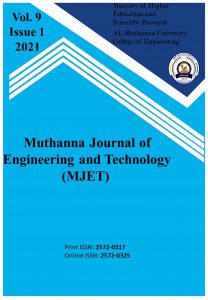MUTHANNA JOURNAL OF ENGINEERING AND TECHNOLOGY (MJET)
Research Article:
Shyamaa A. Mohammeda
Sundus S. Al-Azawieyb
Ahmed Hasan Alic
aChemistry Department, College of Science, Al Muthanna University, Samawa, Iraq
bElectromechanical Department, University of Technology, Baghdad, Iraq
cCollege of Engineering, Al-MuthannaUniversity, Samawa, Iraq
Email address: shiemaa@mu.edu.iq
ABSTRACT
This paper was aimed to examine the removal of oil from water by photocatalytic advance oxidation under solar light. A pH of 11 has shown a higher oil removal efficiency. Oil remove efficiency levels at pH 11 have been found 75% within 230 minutes’ oily water effluent, studies have shown that Langmuir isotherm has been the best-fit one of the isotherms for the removal of oil. Data have shown a higher adsorptive capacity. Also we have studied another parameter like (catalyst concentration, initial oil concentration and pH). While the treatment of waste-water is dependent upon a great level of quality for the processed industrial water, the nature of wastes that are added throughout the utilization, and the treatment degree that has been received by the waste-water. Then, the data of the waste-water quality that has been measured routinely and it was reported at the plants of the waste-water treatments are mainly for disposal of the treated effluent or the necessities of the discharge in terms of the gross pollution parameters.
Keywords: Photocatalytic Treatment; Refinery; Wastewater Treatment; ZnO photocatalyst.
